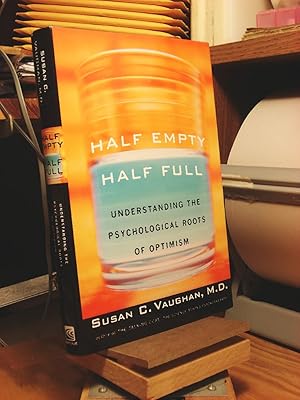The author, a renowned research psychoanalyst, challenges the idea that optimism is genetic, arguing instead that experiences in the first three years of life often shape the neural pathways in the brain.
Crack open Susan Vaughan's
Half Empty, Half Full, check out the fat margins and the relatively large type size, and you might think one of two things: You'll either say, "Great! This'll be a quick read!" or you'll say to yourself, "What is this, a self-help book?
This can't be science". Either way, optimist or pessimist, you're going to be at least half right. But--as Vaughan ultimately makes clear--it's the optimist who's going to win out on this one. A Hah-vard-trained research analyst and frequent contributor to
Harper's Bazaar, the inarguably insightful Vaughan ably straddles the fence between self-help and applied psychology. Her thesis boils down to this: Some of us are lucky enough to be trained as optimists in our formative years, but for the rest of us worry-worts, fear not--optimism can be learned. Alternating between dry papers like "Mood congruent memory biases in anxiety and depression" and pop-psych concepts like Mihaly Csikszentmihalyi's early 1990s notion of "flow", Vaughan comforts the afflicted with thoughtful explanations (often drawing from her experience as a therapist) and concrete advice--assuming, of course, you can get past her sometimes cloying references to "Tiggers" and "Eeyores".
Half Empty, Half Full is good news for pessimists, and even good science, a timely summary of the state of neuroscience as it bolsters many theories of what Vaughan describes as the "positive psychology movement". The anti-depressant Paxil, early cortico-limbic development, desperation in milk-treading lab rats, even Cocoa Crispies ("which are apparently like ambrosia to rats")--they're all here and, thanks to Vaughan, good reading and a compelling argument for not simply chalking up pessimism to factors beyond our control. --Paul Hughes
